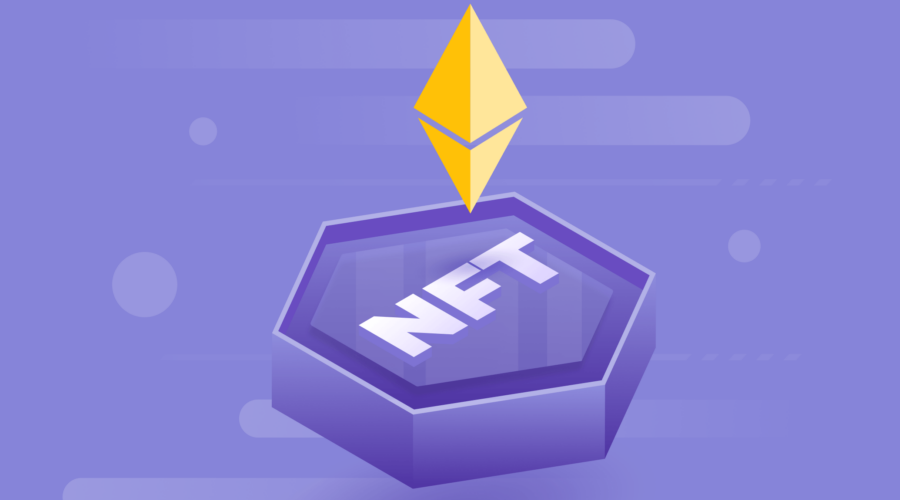There is still disagreement over the true value of non-fungible tokens (NFTs), despite the fact that they gained popularity two years ago among businesses, celebrities, and artists.
However, Scott Duke Kominers, the Harvard Business School’s Sarofim-Rock Professor of Business Administration, believes that NFTs could be ready for a resurgence in 2024.
Despite the many unanswered questions surrounding NFTs, marketing expert and Web3 entrepreneur Steve Kaczynski and Kominers argue in their new book The Everything Token: How NFTs and Web3 Will Transform the Way We Buy, Sell, and Create that businesses can find creative ways to use NFTs to grow their markets and cultivate loyal customer communities. In the passage that follows, the authors discuss the advantages and potential applications of NFTs.
Is it feasible that digital “tokens” may have a value in the hundreds, thousands, or even millions of dollars? Given that tokens are really simply pieces of data stored on a computer, wouldn’t it be reasonable to charge a cent for each one?
The devil is in the details; these tokens aren’t just some random bits. Each NFT is a unique digital record that can be associated with other assets or product attributes and whose owner(s) can be reliably recognized.
In this context, “non-fungible token” implies exactly what it sounds like. We classify an item as fungible when it is easily exchangeable with another unit. Dollar bills can be easily exchanged for one another, just like grains of rice. In this sense, they are all essentially the same. On the other hand, much like a litter of pups, every NFT is one-of-a-kind. You probably wouldn’t swap a puppy for another puppy because of this; thus, they aren’t fungible. (In this sense, a token is only any digital item that a specific account or user can access and manage.)
Limited editions of several NFTs have many identical assets, much like trading cards: In the eyes of most collectors, two mint-condition copies of a Charizard card are worth the same. For our purposes, though, a Charizard card is still non-fungible, especially when compared to, say, a Pikachu card. This is because, unlike with dollar bills, where each note has a unique serial number; when you own one, you still own a copy of the card, which is a distinct asset in and of itself.
Each NFT represents an individually distinct digital record that links to other assets or product features and allows for consistent identification of its owner(s).
Each NFT (or edition thereof) is uniquely identifiable, allowing for constant identification of the computer account that owns it. This enables the identification of an NFT’s “owner” in a way that was previously difficult, if not impossible, for digital goods: Regardless of who has the token, they are its owner. Linking NFTs to other assets or product features expands the idea of digital ownership beyond the token itself.
We will go into more depth about this shortly, but NFTs function similarly to the words on a home deed, transforming a cheap piece of paper into a record of ownership for an item that may be worth a lot of money—which naturally makes the deed valuable as well. Neither a piece of paper nor even a ticket to a minor league baseball game (basically, a seat deed) would be worth thousands of dollars to you. A lot of individuals, nevertheless, would shell out that kind of money for a house’s title.
The deed is only the legal paperwork that grants ownership or title to a property; in reality, however, most of the time, buyers are really purchasing the right to possess the house. In this book, we’ll use the word “deed” in a somewhat informal sense to include both definitions. Although NFTs commonly combine the two ideas, they are more closely related to deeds.
Similarly to deeds, NFTs provide a way for markets to develop by facilitating the transparent establishment and verification of ownership, as well as its possible exchange. With the advent of NFTs, new business models have emerged in fields as diverse as online education and rewards programs, and the exchange of digital photos and media files (like the APE images we discussed) has become a reality.
The fact that many NFTs are incorporated into software allows them to perform activities beyond basic ownership, taking NFTs to the next level. Having a home of your own may open doors to more community resources, including the Rotary Club and the public school system. Just picture it in reverse: if you possess a Nike SWOOSH NFT, you’ll get access to exclusive Nike releases. The music event we mentioned earlier, “ApeFest,” is free to all Bored Ape NFT holders for free. Even the Vatican grants holders of NFTs exclusive access to historical artifacts and documentation.
And naturally, the NFT typically keeps these advantages after transferring them to a new holder.
“THIS TECHNOLOGY HAS THE POWER TO REVOLUTIONIZE MULTIBILLION-DOLLAR INDUSTRIES AND SMALL BUSINESSES, INCLUDING ENHANCING CURRENT REVENUE LINES AND CREATING ENTIRELY NEW ONES.”
In the same way that communities foster camaraderie and teamwork, NFTs are paving the way for unprecedented levels of citizen participation in establishing brands. You are actively involved, not just a spectator. Just picture yourself as the proud owner of a Star Wars character and a genuine investor in the franchise. Alternatively, you might help create the Patagonia jacket of the future. Alternatively, you can actively join a worldwide network dedicated to a social cause that you’re passionate about.
Even though NFTs originated in the internet space, they have swiftly expanded into the actual world, much like the Bored Ape brand. This isn’t a fluke; on the contrary, it’s a deliberate strategy of NFTs to reward holders with a portion of the token’s worth, which in turn motivates them to put effort into expanding the brand’s reach and fostering its positive reputation in all its venues.
The authoring of this book involved attempts to come up with a title that adequately described the “doing” of an NFT. Our starting point was the question, “What existing goods and services can NFTs supplement or substitute?” “Just about everything” was the short response. Whether it’s a little firm or an industry worth billions of dollars, this technology can improve existing income streams and open up whole new ones. Along types of digital credentials, memberships, and ownership records are appearing alongside innovative NFT-native product categories like the Bored Ape Yacht Club and other digital companies.
Despite the fact that NFTs begin with the most basic of structures—just an ownership record in a digital database—we may surprise and construct flexible value by building functionality on top of them, as we will see. NFTs can transform photographs into event tickets, which can then serve as brand anchors. With their innovative frameworks, they will bring in a new age of customer loyalty programs that are good for companies and customers alike. They’re going to revolutionize how we handle our medical records and employment histories. And they may make product ownership seem more like belonging to a tight-knit group.



